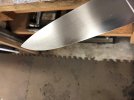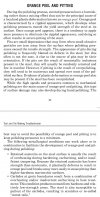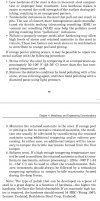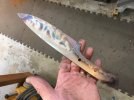- Joined
- Feb 29, 2016
- Messages
- 20
I'm hoping to get some insight here on a pattern I see frequently on my D2 after heat treat. The best way to describe it is vein like in appearance. Most of the time this pattern is virtually gone after finish sanding. Recently, I had a blade that this pattern still remained fairly noticeable even after finish sanding.
The blade is heat treated at 1850 for 30-35 minutes and protected in a foil pouch. Please see attachment below. Thanks
Randy
The blade is heat treated at 1850 for 30-35 minutes and protected in a foil pouch. Please see attachment below. Thanks
Randy




